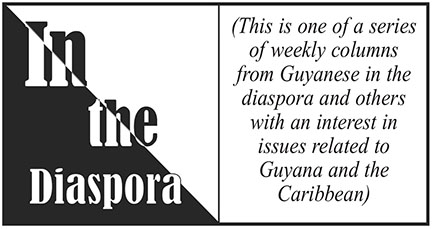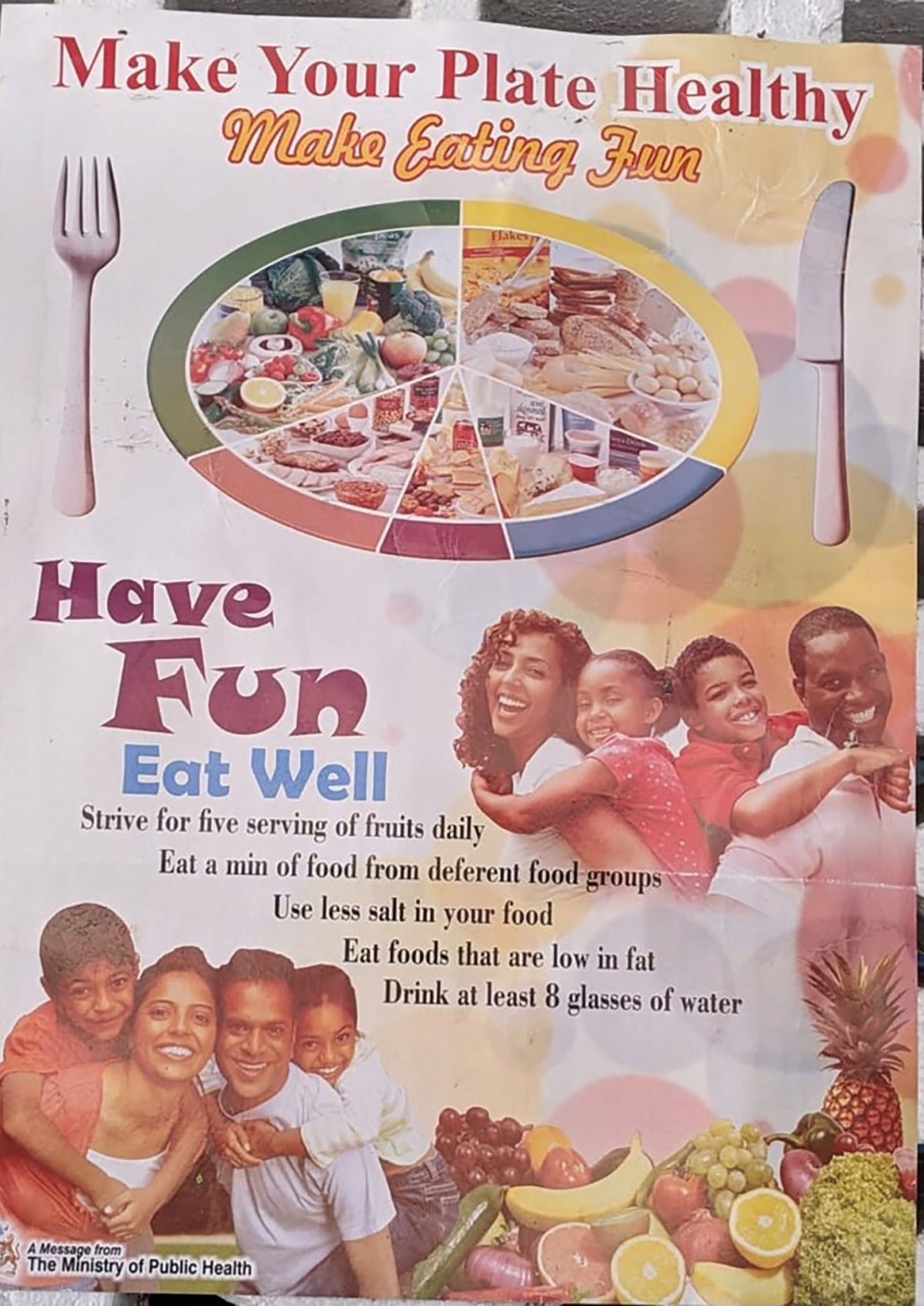By Red Thread
 Red Thread’s members are primarily grassroots women, who live daily with various forms of economic and social insecurity. Despite this, over three decades, we have built an organisation that organises with women, beginning with grassroots women, to cross divides and transform our conditions. Red Thread runs the Cora Belle and Clotil Walcott Self-Help Drop In Centre, which provides support for and advocates with survivors of domestic violence as well as low wage workers.
Red Thread’s members are primarily grassroots women, who live daily with various forms of economic and social insecurity. Despite this, over three decades, we have built an organisation that organises with women, beginning with grassroots women, to cross divides and transform our conditions. Red Thread runs the Cora Belle and Clotil Walcott Self-Help Drop In Centre, which provides support for and advocates with survivors of domestic violence as well as low wage workers.
Now that Guyana is an oil producer, one of the big stories over the holidays at home and internationally is that we are one of the fastest growing economies in the world. This should feel like very good news. And it is certainly the case that we are feeling the effects of such fast growth, but for most households what we are feeling is strain about how to manage a cost of living that keeps going up.
Three years ago, we started doing our daily household budgets from Regions 3, 4, 6, 7 and 8, to try to keep track of the changes in prices. In one of our articles in 2022, we wrote that “what we know from our daily experience is that the cost of living is making things increasingly difficult and unbearable for us, and what we are able to earn is not keeping up with these changes. And we know that we can multiply these examples over and over again across Guyana. And yet in all of the conversations about oil, behind the photo opportunities, behind the bright smiles, behind the new deals signed, behind all the talk, [our voices, our stories] are not making the front pages.”
The Ministry of Public Health recently published a photo to advise households of what a balanced meal should look like. It includes five servings of fruits a day. It includes vegetables and proteins on everyone’s plate for each meal. The poster says “Make your plate healthy. Make eating fun.”
We agree that good nutrition and good health go hand in hand. We would all like to eat in a healthy way. But it is hard to make eating fun when you have to scramble and hurt your head trying to figure out what you can afford (and this is after paying transportation and rent and light bill and more). Some of the pictures on the poster have things like grapes and apples and pears and broccoli. None of these is grown locally, making us wonder who is this really for? (Grapes cost $1,400/pound, two pears cost $1200, five apples cost $1,000 and a small piece of broccoli costs $1000).
Here is what three meals for a family of five looks like, trying to plan as healthily as we can:
Breakfast
1 small box cereal: $700
1 loaf of bread: $360
1 tin evaporated milk: $440
1/2lb milk: $355
5 eggs: $50
1 small pk Milo: $535
Oranges: $1000
Lunch
2 pints rice: $360
2lbs cabbage: $800
Eschallot: $200
Celery: $200
1/2lb tomatoes: $300
1/2 onion: $160
Garlic: $160
Cubes: $100
1 1/2 lbs chicken:$780
Limes: $100 (to wash the chicken)
1 pt channa: $460
Dinner
1/2 pound cheese: $600
1 loaf bread: $360
We could not match the daily recommended servings. We cannot make vegetables for each meal or five servings of fruit. These three basic daily meals cost $8020, which is way over the daily minimum wage of $2,776.00. The Ministry of Public Health’s healthy meal plan is not doable on a minimum wage. Perhaps they need to revise it, with local foods, budget it out themselves, and recommend how ordinary Guyanese are meant to eat nutritiously and affordably right now.
We also decided to come up with a basic Christmas budget for a household of five persons. We catered only for two meals – a breakfast of pepperpot with some bread and fruits; lunch with fried rice, macaroni and cheese, some chicken and mashed potatoes (garlic pork is optional) and a black cake and some drinks. Here are the costs:
Christmas day pepperpot breakfast (this might last about 2 to three days if they are not big eaters)
3 lbs. beef: $2,700
2lbs. cow heel: $1800
2lbs. tripe: $1600
2lbs. cow face: $1600
Pepper: $200
Thyme: $200
Meat seasoning: $460 small bottle blended
Cinnamon stick: $200
Cloves: $200
1 bottle Cassareep: $1000
Sugar: $160
Baking bread
1 pack flour: $860
Yeast: $400
Shortening: $560
Beverage
1 pack milk: $ 710
1pack milo: $535
Fruits
5 Oranges: $1,000
Mangoes: $1000
2lb Cayenne bananas: $800
Christmas Day Lunch
Fried rice
1pack rice: $600
1pack carrots: $500
1 tin corn: $440
Bora: $400
1lb onions: $340
Two heads Eschallot: $200
Celery: $400
Fried rice seasoning: $240
Small bottle of oil: $920
Garlic: $360
4lbs chicken: $2,080
1 bottle Chinese sauce : $300
Macaroni and cheese
1 pack macaroni: $340
1lb. cheese: $1200
1 bottle mustard: $495
Creamed potato
2lbs potatoes: $300
Garlic pork – optional
2 lbs. pork: -$1,800
Fine thyme: $400
Pepper: $ 200
Small bottle of vinegar: $360
Black cake (1lb)
1lb. flour: $200
1lb. butter: $640
1lb. sugar: $160
12 eggs: $840
4lb fruits: $3,280
1 small bottle cake colouring: $600
1bottle rum: $1,500
Beverages
1 two litre bottle soda: $640
1 box orange juice: $740
1 bottle water (five gallon refill): $240
At Christmas, people try to do extra so they would try to get a bottle of soda or some malta or shandy. One bottle of Malta costs between $300 – $360 depending on where you buy it from. One Smalta costs $260. For lemonade, three limes cost $200.00. Sorrel is expensive. $400.00 can make a small mug, one glass per person, no seconds.
The total cost for Christmas Day (not including the sorrel or bottled drinks like Malta) for a household of five: $34,180.00.
We should add that this is just a Georgetown budget. In other parts of the country, including the interior, the costs will be much more for some items.
This basic Christmas day budget costs more than half of one monthly minimum wage salary. There is all the talk of how we are the fastest growing economy in the world, and how our per capita income is set to become one of the highest in the world (this is when you divide a country’s economic output by the number of people in the country). These numbers say we are doing very well.
But these numbers do not add up in our households. Or they add up for a very few Guyanese, who are doing very well, who don’t have to budget like the majority of us, who can enjoy Christmas without having to worry about how to afford it. What we experience on the ground is completely different. We cannot make ends meet. We cannot save. Those numbers may say one thing. What we know is that we live in a country today where the national minimum wage is $60,147.00 per month (about USD$286.00), or $2,776.00 per day (about USD$13.00), or $721,764.00 per year (about USD$3,34367.00).
A few years ago, following our first article on the cost of living in an oil economy, Stabroek News started a series, “how the cost of living is affecting people.” This Boxing Day, they published Part 108, which took them to Blankenburg on the West Coast of Demerara, two days before Christmas. Three years after we first wrote about this, the situation does not seem to be getting any better for most of us. As one of the persons interviewed in Blankenburg said, “you have rich and poor people; poor people can’t afford to buy certain items because the cost of living is high but rich people can afford it.”
Who feels it knows it.

